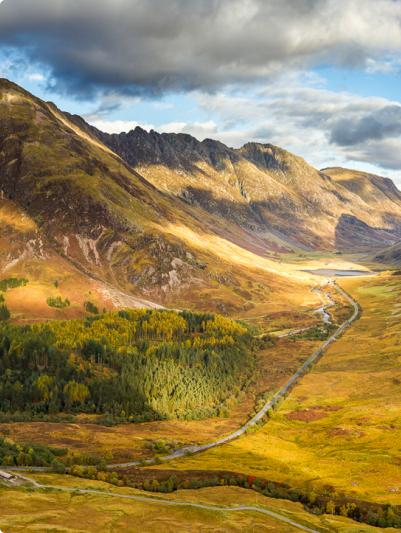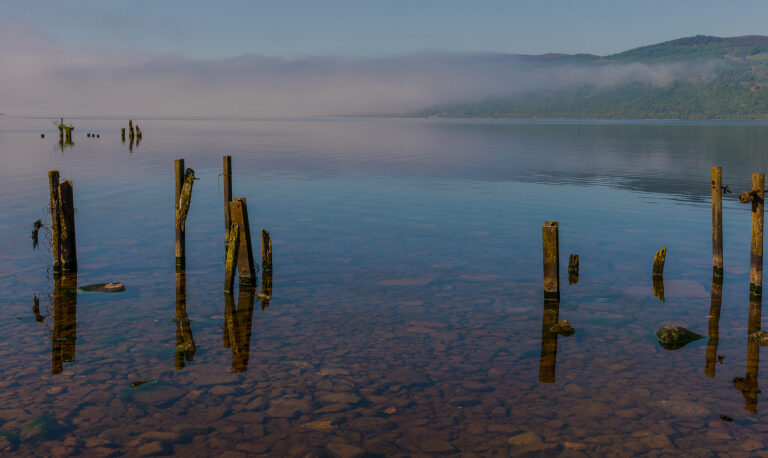Pembrokeshire Coast Path: Is This Britain’s Most Beautiful Coastal Walk?
Did you know that Pembrokeshire is Britain’s only coastal National Park?
This beautiful area is a true walker’s paradise, featuring incredible cliff-top hikes and expansive beaches. You can explore charming villages and towns, harbours, inlets and islands, all connected by the Pembrokeshire Coast Path. This is also one of the finest areas to spot wildlife in the country.
I was lucky to travel to Pembrokeshire and wander along the stunning coastal path. From picturesque villages to specular wide beaches and idyllic hikes along the coastline, Pembrokeshire is a wonderful walking destination. These were the highlights of my trip.

The Trail
The Pembrokeshire Coast Path was Wales’ first National Trail, covering 186 miles of one of the most incredible coastlines in Britain. The trail officially begins in Amroth in the south and finishes in St Dogmaels in the north, although it can easily be done in reverse.
The entire path goes up sea cliffs and down to seaside villages, making it moderately challenging. In total, there are a staggering 35,000 feet of ascent and descent in the trail, which is said to be equivalent to climbing Mount Everest!
However, there are many ways to split the various sections, and there is also the flexibility to do many circular walks along the trail, which is precisely what we set out to do.
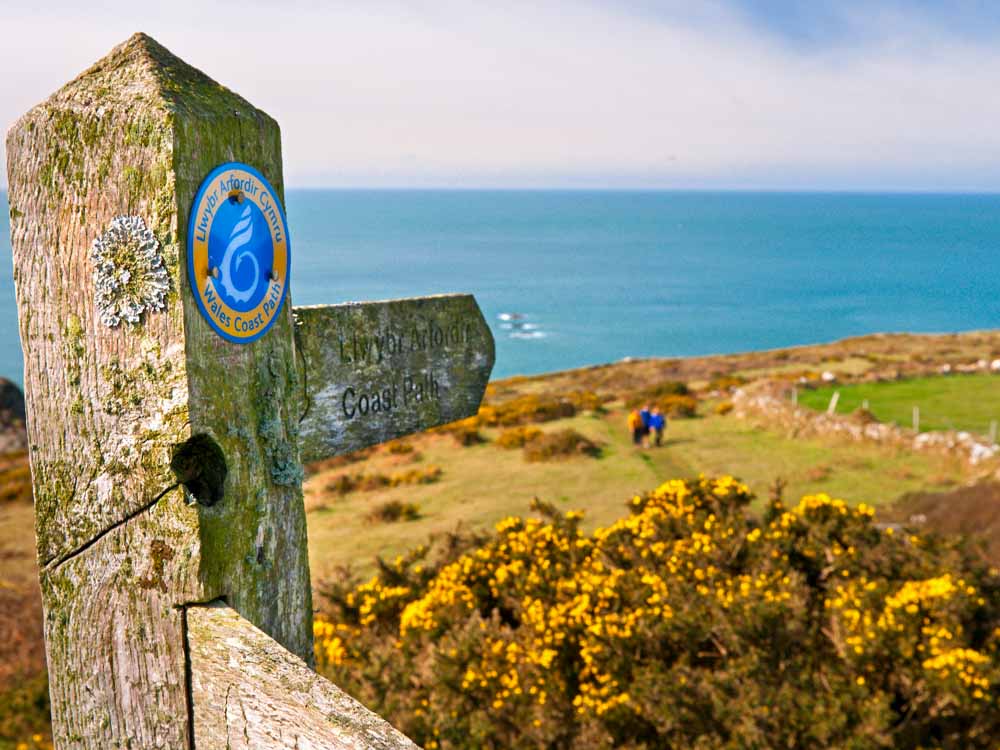
Coastline
The trail incorporates some of the most spectacular beaches in the country. Perhaps the most impressive is located in Newgale, one of the smallest and most picturesque fishing villages we visited.
Newgale, with its charming cafes and galleries, overlooks its award-winning Blue Flag Beach – the spectacular and enormous Newgale Sands. The stunning beach spans for almost 2 miles, covered in soft golden sand fringed with a huge pebble bank which was deposited here after a big storm in 1859.
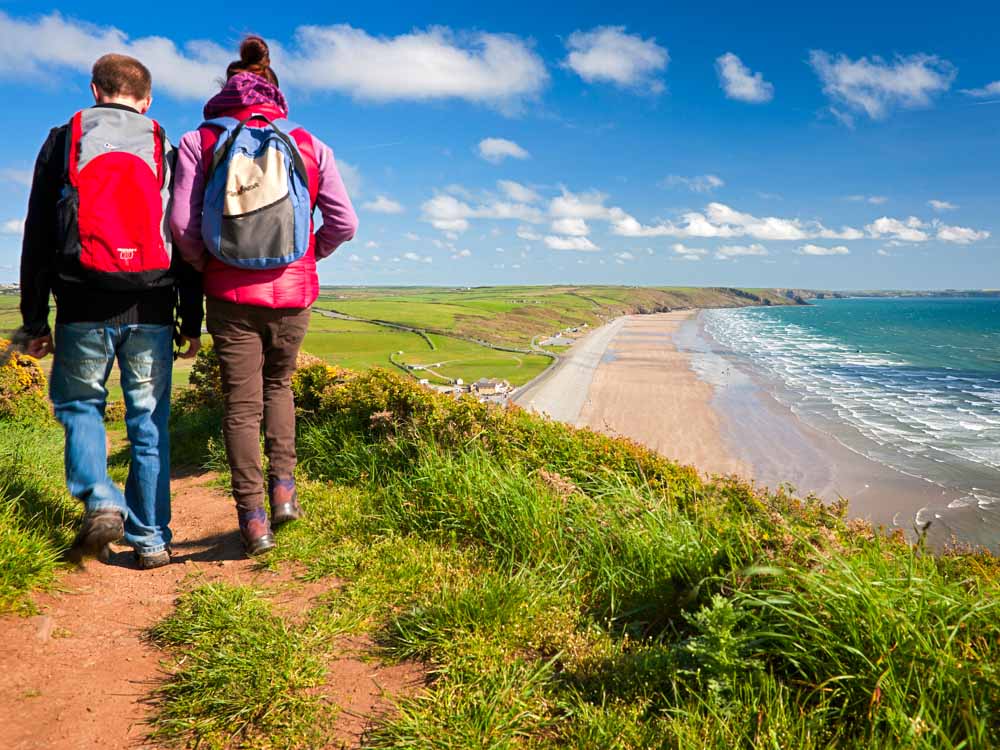
The golden sands of Whitesands Bay, close to the small city of St Davids, is a wonderful spot too. It is said that this is where St. Patrick had his vision to convert Ireland to Christianity, setting sail from this bay in the 5th century. Our walk along St Davids Head gave us spectacular views over to Ramsey Island, and finished in the pristine beach of Whitesands Bay.
The Marloes Peninsula is another spectacular location, which combines dramatic coastal scenery and safe bathing on golden sands. Marloes Sands in an idyllic spot in one of the most remote locations of the path.
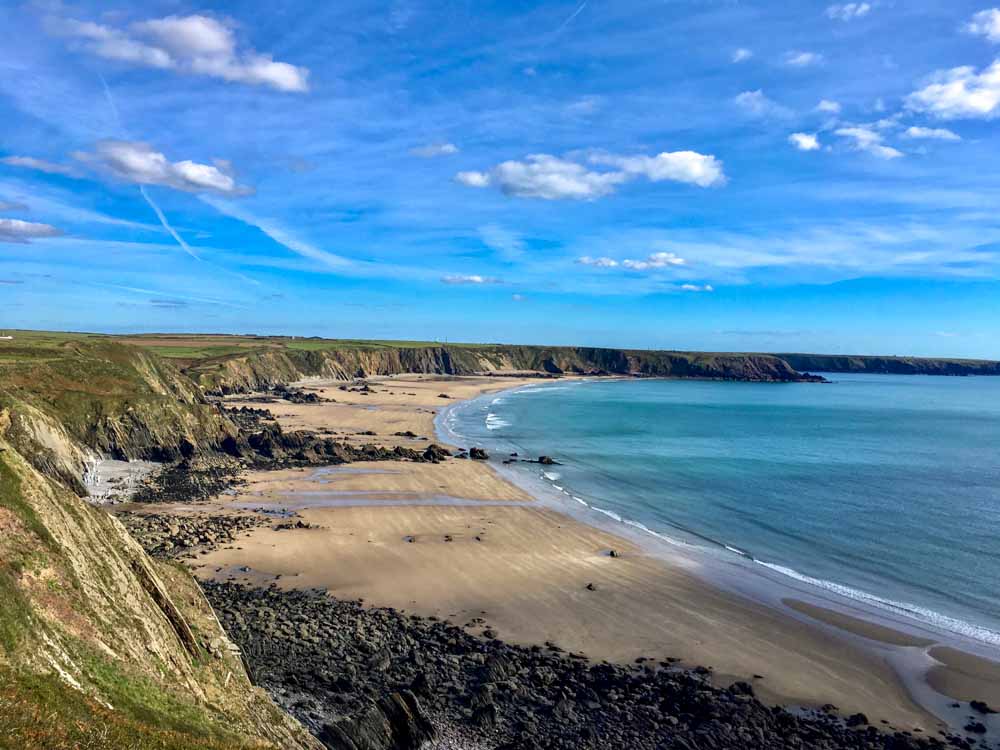
Pretty Towns & Scrumptious Seafood
The Pembrokeshire Coast Past is lined with charming villages and towns, where you can find some of the freshest seafood in the country.
From small beautiful harbours such as Solva, to more industrial but characterful towns like Milford Haven, there is a variety of wonderful stops along the path.

Surely, anyone that travels to Pembrokeshire can’t miss the colourful town of Tenby. Nestled between the rolling Pembrokeshire hills and the placid waters of Carmarthen Bay, the pretty seaside town of Tenby with its old cobblestone streets, pastel-coloured houses and unique artsy atmosphere is a popular destination.
Tenby is a place to relax and wander. Packed with bustling cafes, restaurants and pubs, there is almost Mediterranean feel to this Victorian town. We dined at the Bay Tree Restaurant, where we had huge king prawns, mussels and a pasta seafood feast while enjoying some live music.
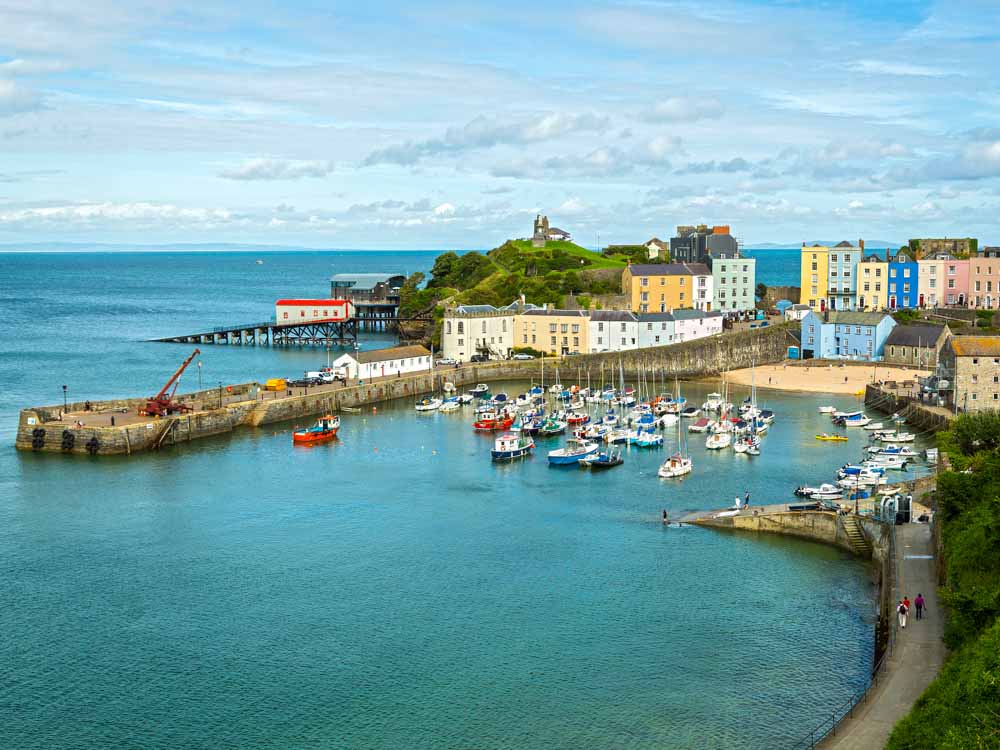
Next on the list has to be St Davids, the smallest city in Britain with a population of just over 1,600! St Davids is, in fact, a small village, however, it was granted ‘city status’ by Queen Elizabeth II in 1995 because of the presence of its stunning cathedral.
The roots of St Davids go back to the 4th century when St David himself lived here, and today St Davids is a vibrant place known for its artists, travellers, pilgrims and surfers. We dined at the cosy and elegant Cwtch Restaurant (meaning hug in Welsh). Given my obsession with seafood, I had an excellent Monkfish fillet stuffed with prawns. Delicious!
The last of the bigger towns we visited was Pembroke, worth visiting for its various local art and crafts shops on the Main Street and quaint tearooms. Pembroke also has a castle, and the Pembroke Town Hall is worth visiting for its murals – a series of wall panels painted by Mr George Lewis and Mrs Jeanne Lewis.
While we didn’t dine in Pembroke, we did pay a visit to the Pembroke Cake Shop, lined with all sorts of scrumptious baked goods. We got a traditional Barra Brith to take back to the office.

Historic Attractions
Pembroke is certainly worth a visit, not only for its amazing cake and art but also for its magnificent Norman castle, standing proudly at the head of a rocky ridge and surrounded on three sides by water. It is one of the finest and best-preserved strongholds in the country and was once the seat of a succession of major barons.
We explored the labyrinth of passageways and towers, taking in the views from the 75ft high Great Keep.
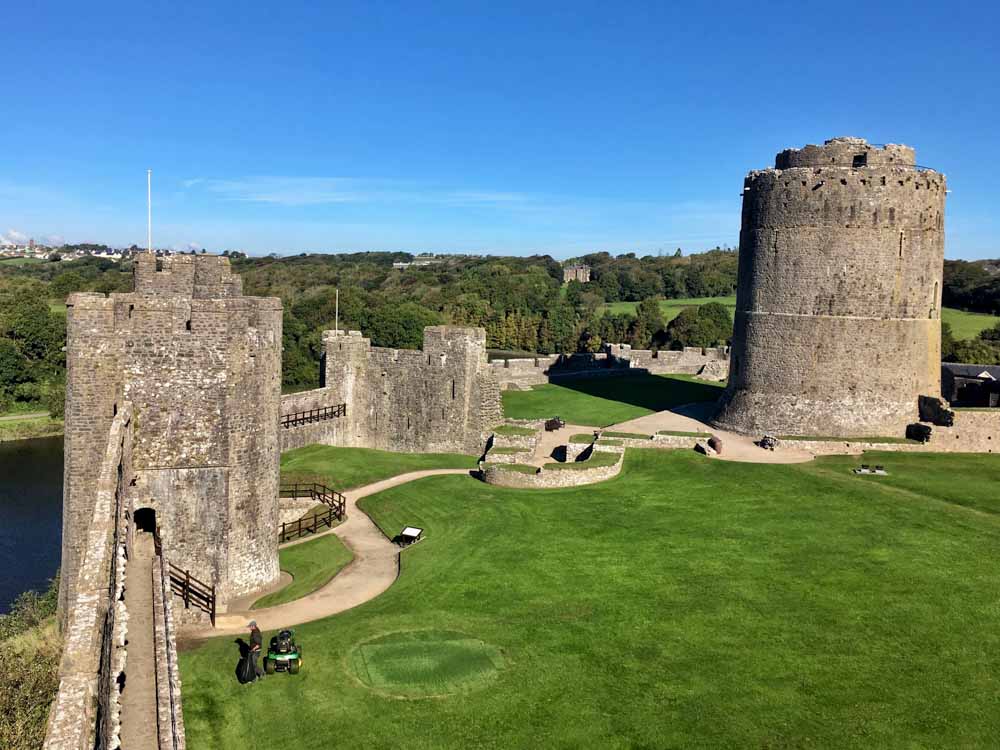
Another incredible castle is the enchanting Norman castle in Manorbier. Featuring a striking location perched above the beach, Manorbier Castle still maintains well-preserved masonry, a chapel, round tower and gatehouse.
There are numerous stairs, towers, rooms and battlements to explore as well as beautiful gardens.
The grand 12th-century cathedral in St Davids is one of Wales’ most iconic religious sites and is a most impressive architectural feat. We visited at dusk when it was quiet and the sun set behind the beautiful purple sandstone church.

And then again on a busy Saturday morning, when we were blown away by the striking interior of the cathedral.
Last but not least are the brooding Gothic ruins of The Bishop’s Palace, located right opposite the bank of the river from St Davids Cathedral.
The Bishop’s Palace has open-air theatre performances in the summer, which are not to be missed!

Wildlife
While walking on the Pembrokeshire Coast Path there are plenty of opportunities to see wildlife. During our trip, we were lucky to see seals and their pups at Marloes and St Davids Head, as well as a myriad of seabirds!
There are various boat trips available to visit one of Pembrokeshire’s five islands and if you are lucky, you might spot some dolphins, porpoises, whales, puffins, Atlantic grey seals, gannets and many other migrant birds.

It is a good idea to add rest days between the walking days along the Pembrokeshire Coast Path, so you can take advantage of all that this area has to offer. Tenby Boat Trips, for example, offer two wildlife boat tours around Tenby Harbour, the Caldey Island sound and the protected bird reserve of St. Margarets Island.
Or you may wish to take a short boat trip to Skomer Island and spend the day exploring this fascinating island nature reserve and see the thousands of puffins, guillemots, and razorbills, along with a host of other birds and wildlife. The boats leave from the tiny harbour of Martin’s Haven.
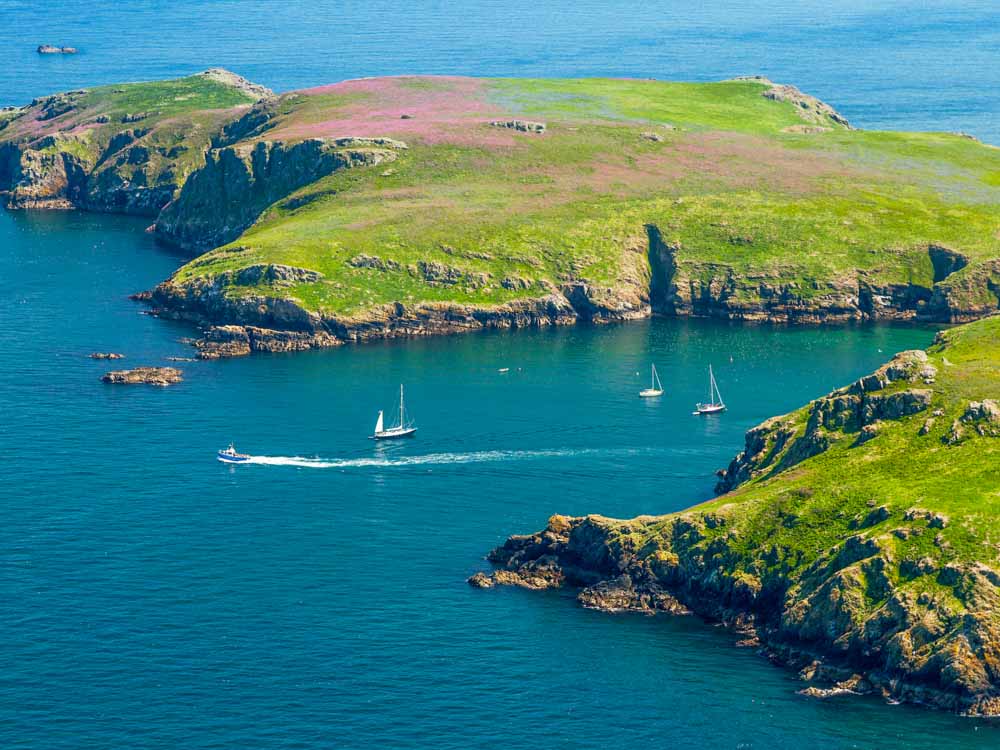
Voyages of Discovery are based in St Davids and offer a range of boat trips to around the caves and gorges of Ramsey Island – home to one of the UK’s largest colonies of Atlantic grey seals – as well as longer trips to the wild offshore islands of Grassholm, Skomer and Skokholm. An ideal way to get up close and personal with the wildlife that calls this rugged landscape home.

Escape to the Pembrokeshire Coast
When it comes to coastal scenery, lovely seaside villages, fabulous local cuisine, and wonderful Welsh wildlife, the Pembrokeshire Coast Path might just be Britain’s best coastal walk.
Katia Fernandez Mayo
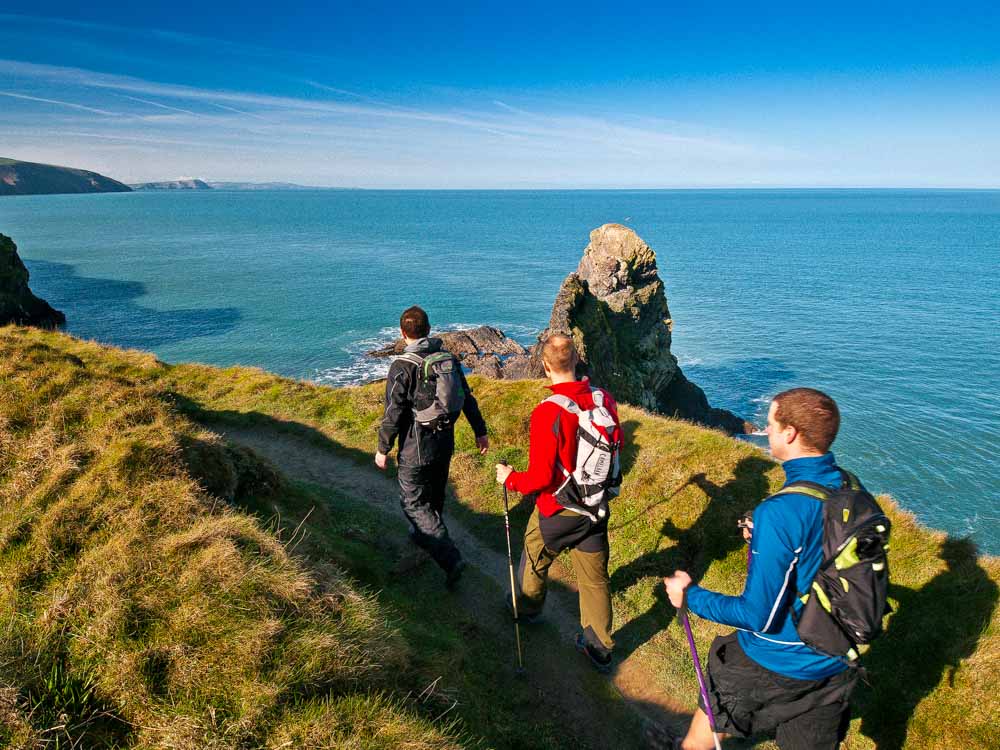
P.S. Absolute Escapes offer self-guided walking holidays on the Pembrokeshire Coast Path which include accommodation, daily baggage transfers, guidebook/map, and full information pack. Send us an enquiry today and we’ll be delighted to help you plan your escape to the wonderful Welsh coast!
